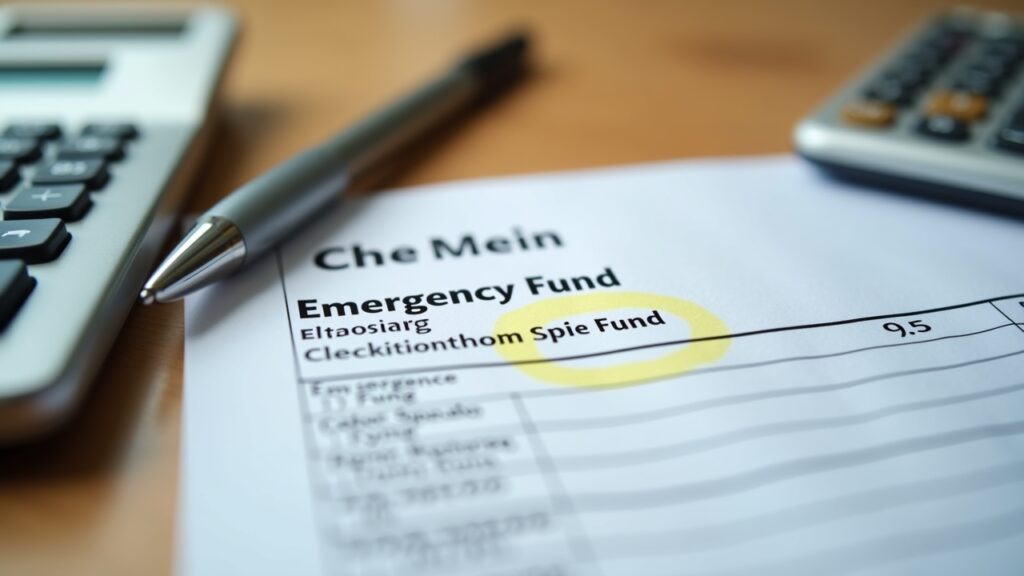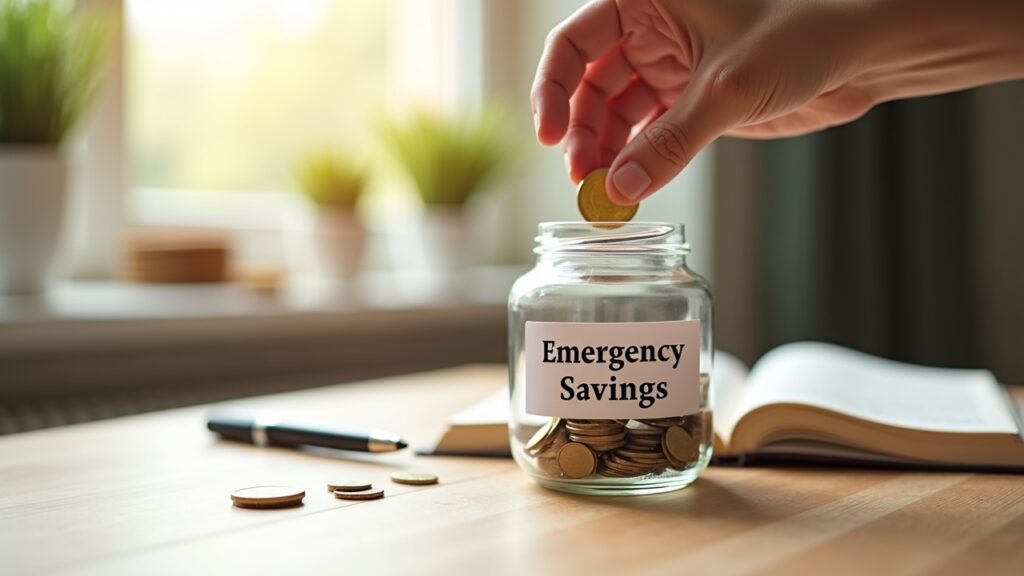Advertisements
You know that sinking feeling when your car makes that weird noise? Yeah, the expensive one. Last month, my trusty Honda decided it needed a new transmission – right after I’d blown my savings on a “can’t-miss” investment opportunity that totally missed. $3,200 later, I was eating ramen for weeks and kicking myself for not having a proper emergency fund budget in place.
Here’s the thing – building an emergency fund isn’t just about stuffing money under your mattress anymore. It’s about creating a realistic budget that actually works with your lifestyle. Trust me, I’ve tried the whole “save everything and live on beans” approach. Spoiler alert: it doesn’t last.
After years of financial fumbles and finally getting my act together, I’m gonna share what actually worked for me. And nope, it’s not about giving up your daily coffee (though maybe switch to medium instead of venti?).
Why Your Emergency Fund Keeps Failing (Mine Did Too)

Let’s be real – most of us treat emergency funds like New Year’s resolutions. We start strong, save like crazy for two weeks, then completely forget about it. I once “saved” $500 in January, only to spend it on concert tickets in February because, well, my favorite band was in town!
The biggest mistake? Not having a dedicated budget for your emergency savings. You can’t just hope money magically appears at the end of the month. That’s like hoping your teenager cleans their room without being asked – ain’t gonna happen.
Another problem is we set unrealistic goals. Everyone says “save 6 months of expenses!” but when you’re living paycheck to paycheck, that feels about as achievable as climbing Mount Everest in flip-flops. I started with a $500 goal, and even that took me three months.
Creating Your Emergency Fund Budget (The Real Way)
Alright, here’s where we get down to business. First thing – you need to know exactly where your money’s going. I know, I know, tracking expenses is about as fun as a root canal. But stick with me here.
I use this super simple method that actually works:
- Track everything for one month (yes, even that shameful midnight Taco Bell run)
- Categorize your spending into needs, wants, and “what was I thinking?”
- Find your monthly average for essential expenses
- Calculate 10% of your income as your starting savings goal
When I first did this, I discovered I was spending $240 a month on subscription services I forgot I had! Netflix, Hulu, three different gym memberships (don’t judge), and something called “CatFactsDaily” that I apparently signed up for in 2019. Canceling just half of those gave me instant emergency fund money.
The key is to start small and be consistent. I began by automatically transferring $50 every payday to a high-yield savings account. It wasn’t much, but after six months, I had $600 saved. That’s when my water heater decided to explode (because of course it did), and guess what? I actually had the money to fix it!
Smart Strategies That Actually Work
Here’s what nobody tells you about emergency fund budgeting – it’s not just about cutting expenses. Sometimes you gotta get creative with bringing in extra cash. I started selling stuff I didn’t need on Facebook Marketplace. Old electronics, clothes that didn’t fit anymore (thanks, pandemic weight), and random kitchen gadgets I bought during late-night infomercial binges.
One trick that’s been a game-changer? The 52-week challenge, but in reverse. Instead of starting with $1 and ending with $52, I start with $52 when I’m motivated and decrease it each week. By the end of the year, when I’m burnt out on saving, I’m only putting away a buck. Still adds up to $1,378!
Another strategy is to automate everything. Set up your direct deposit to split between checking and savings before you even see the money. What you don’t see, you won’t spend on random Amazon purchases at 2 AM. I learned this after buying a life-sized cardboard cutout of Danny DeVito. Don’t ask.
Where to Keep Your Emergency Stash
Okay, so you’ve got some money saved – where do you put it? Under the mattress is out (trust me, I tried that until my dog found it). You want somewhere accessible but not TOO accessible, ya know?
I keep mine in an online high-yield savings account. The interest isn’t gonna make you rich, but hey, free money is free money. Plus, it takes a day or two to transfer, which stops me from impulse-spending on “emergencies” like 50% off at my favorite store.
Some folks like money market accounts or even short-term CDs. Whatever you choose, make sure you can access it within a few days for real emergencies. Because when your roof is leaking, you can’t wait 6 months for a CD to mature.
Your Emergency Fund Action Plan Starts Now

Look, I get it. Saving money when you’re already stretched thin feels impossible. But after going through multiple financial disasters unprepared, I can tell you – having even a small emergency fund changes everything. No more credit card debt from surprises, no more borrowing from family (awkward!), and way less stress.
Start today, even if it’s just $10. Open that savings account, set up that automatic transfer, and track your spending for just one week. Your future self will thank you when the car breaks down, the furnace dies, or your kid needs emergency dental work.
Remember, this isn’t about perfection – it’s about protection. You’re building a safety net, not trying to become the next Warren Buffet. Take it one step at a time, be patient with yourself, and celebrate the small wins. Ready to take control of your finances? Check out more practical money tips at Cashflow Zen – we’re all about making finance less scary and more doable!




[…] you’re looking for more practical money tips and real-life financial stories, check out other posts on Cashflow Zen – we’re all about making personal finance less scary and more […]